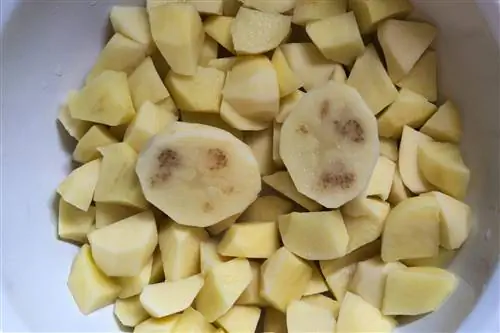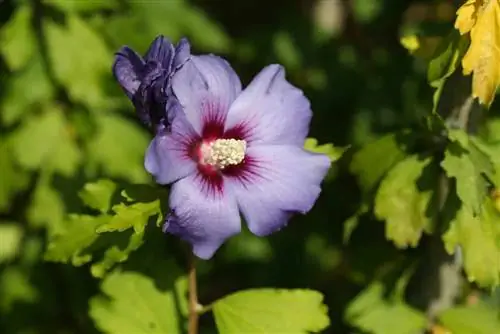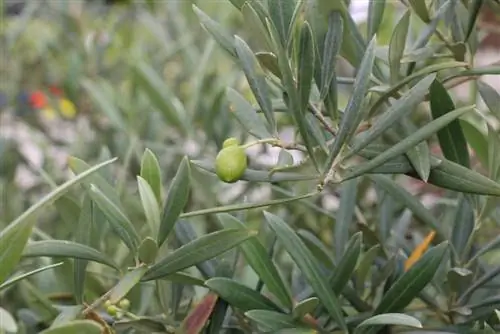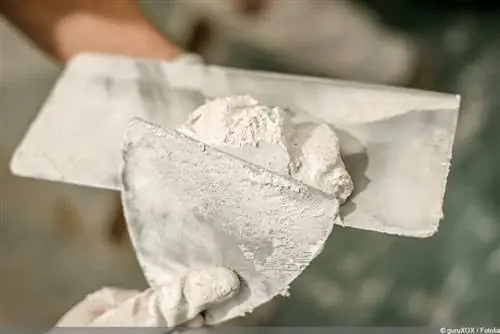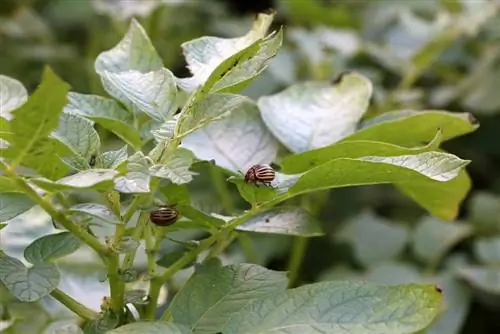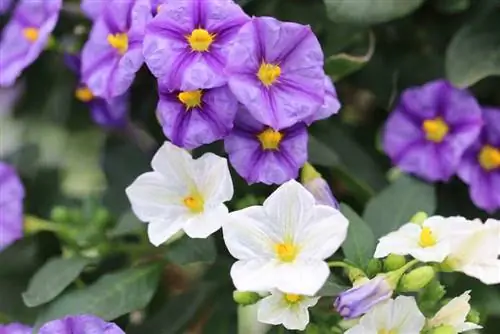- Author admin [email protected].
- Public 2023-12-17 03:39.
- Last modified 2025-01-24 12:45.
After peeling or cooking, a potato has brown to black spots on the inside. This doesn't look very appetizing at first. And above all, the question arises as to whether the potato is still suitable for consumption or not. Since the causes of these discolorations can be different, in some cases they are still edible by removing the dark areas, in other cases they must be thrown away.
Hollowness
If a raw potato is cut open, star-shaped holes with a brown edge can often be seen. This is a care error during cultivation. Because hollowness is a result of nutrient and water stress during growth.

Typical characteristics
- The flesh is only slightly brown in the middle
- so-called brown marrow
- Precursor to maldevelopment
- Bulb is edible
- Hollow spots have changed consistency
- are often perceived as unpleasant when consumed
Rhizoctonia infection
Rhizoctonia infection is a fungal disease also called beet rot. However, this is only a visual change to the pulp; in this case the edibility is unrestricted. However, it is advisable to remove the dark areas before consumption:
- superficial, individual spots in the pulp
- can later stretch deep into the middle
- dark to black color
Note:
Stored potatoes in particular can be affected by the fungus. Fungal growth can be prevented if stored in a cool and dry place.
Black spot
Black spot is very similar in appearance to Rhizoctonia infection, but the cause is completely different. This is due to mechanical damage that has damaged the pulp inside due to external influences. Black spots are pressure marks, but they should not be underestimated:
- gray spots at the beginning
- later blue to black
- Potatoes can be eaten
- the dark spots are also edible

However, the damaged areas offer a very good opportunity for rot or mold pathogens to penetrate and should therefore be removed before consumption. After a while, the entire tuber spoils and must then be thrown away.
Tip:
If an unpeeled and uncooked potato feels soft and mushy on the outside, then it is affected by rot and mold pathogens and is therefore no longer edible as a whole.
Tobacco rattle virus
The Tobacco Rattle Virus is iron spot. This is quickly recognized by the tiny brown spots, which, however, spread over a large area throughout the entire pulp. These spots also only become visible after peeling and cutting the raw potato:
- Virus is transmitted by roundworms
- the nematodes suck on the roots of the plant
- Prevention is not possible
- Nematodes are found in every soil
- Remove affected areas on the tuber before consumption
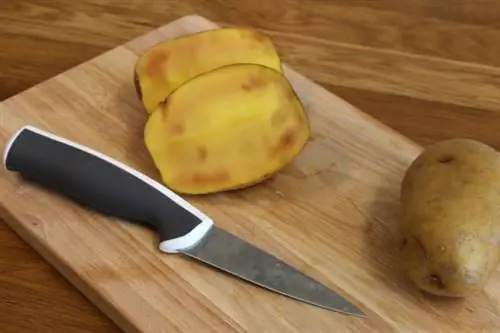
Note:
The affected areas of iron stain are still edible. If the spots extend through the entire flesh of a potato, you can still eat it without any concerns. However, it is the appearance that deters many people from eating the brown-colored tubers.
Stains that appear after cooking
When raw, after peeling and cutting, the potato still looks he althy, there are no spots to be seen. These only show up after cooking. Then dark brown areas appear inside the potato:
- chemical reaction
- Chlorogenic acid and iron react when heated
- Iron is responsible for the black spots
- unrestricted enjoyment
- Stains do not need to be removed
Note:
Even if in most cases it is not recommended to eat spotted potatoes, it is always your own feeling that should be in the foreground. If you are uncomfortable with the dark spots on the tubers, do not eat them.
Frequently asked questions
Can I avoid the brown spots in the potatoes?
As a rule, freshly harvested potatoes are not dark in color. This is where the green color comes from. Therefore, the brown discoloration is usually a storage error that can be avoided. You should always store potatoes in a cool, dark place and make sure that they have enough air circulation between the individual tubers. Therefore, various spots appear more often on tubers bought in the store than when grown at home.
Can I tell from the outside whether a potato is brown on the inside?
Unfortunately you can't tell what the flesh of the potato looks like from the peel. The spots are usually only recognized after cooking or peeling. Therefore, it may well happen that you buy a bag of potatoes in the store where the fruit looks attractive on the outside, but the flesh has spots.
The potato is not brown but green, can I still eat it?
Potatoes can have a light green color below the peel but also further inside. These green spots contain the poison solanine, which the potato uses to protect itself against predators. Green spots appear when the plant is stored or grown in too bright a light. Since the poison is not easy for us humans to digest, the green areas should be generously removed before cooking, as the poison is not destroyed by cooking.

